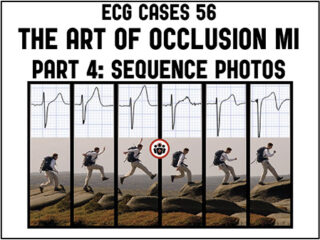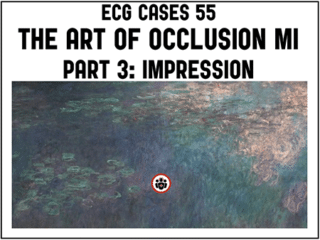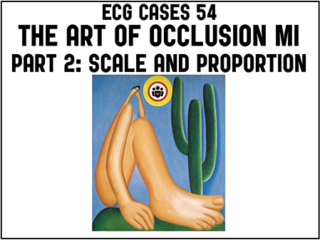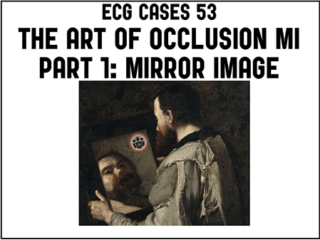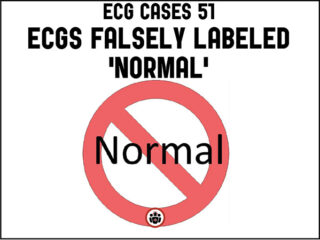
ECG Cases – Making complexes simple is a monthly blog by Jesse McLaren (@ECGcases), a Toronto emergency physician with an interest in emergency cardiology quality improvement and education. Each post features a number of ECGs related to a particular theme or diagnosis (with a focus on acute coronary occlusion), so you can test your interpretation skills. We challenge you with missed or delayed diagnosis, those with false positive diagnosis, and those that had a rapid and correct diagnosis. Cases are followed by a quick summary of the literature that relates to the cases, and we bring it home with practice changing pearls that you can use on your next shift.
Share your interesting ECGs with us!
ECG Cases 56 – Art of Occlusion MI Part 4: Sequence Photos
In this month's ECG Cases Dr. McLaren explores how sequence photos help identify Occlusion MI. He illustrates through cases how hyperacute T waves and subtle ST elevation with reciprocal ST depression can provide an early snapshot of occlusion MI – and might remain the only sign of occlusion. How resolution of ischemic symptoms along with regional T wave inversion (or reciprocally tall anterior T waves) can indicate spontaneous reperfusion, while subacute and persisting symptoms with Q waves and T wave inversion indicate refractory occlusion. And how spontaneous reperfusion is at risk for reocclusion, with recurrence of ischemic symptoms accompanied by ST/T pseudonormalization and then hyperacute T waves and ST elevation.
ECG Cases 55 The Art of Occlusion MI Part 3 – Impression
In this ECG Cases blog Dr. Jesse McLaren guides us through 6 illustrative cases delving into overall impression in identifying occlusion MI. He discusses how using multiple OMI findings such as acute Q wave, subtle STE, reciprocal STD, hyperacute T waves, and reciprocal TWI to contribute to your overall impression, can double the sensitivity of STEMI criteria for acute coronary occlusion...
ECG Cases 54 The Art of Occlusion MI: Scale and Proportionality
On this month's ECG Cases, Dr. Jesse McLaren explains how STEMI criteria can be false positive with large scale QRS and proportional ST elevation, or false negative with low/normal scale QRS and disproportionate ST elevation and hyperacute T waves, and that rules for subtle occlusion using proportionality can help differentiate LBBB with or without Occlusion MI, or LV aneurysm vs anterior STEMI with Q waves... Please consider a donation to EM Cases to ensure continued Free Open Access Medical Education here: https://stg-emergencymedicinecases-emcstaging.kinsta.cloud/donation/
ECG Cases 53 – The Art of Occlusion MI, part 1: Mirror Image
In this month's ECG Cases Jesse McLaren takes us through 6 cases highlighting important mirror concepts in ECG interpretation including: which leads are reciprocal to each other, how to identify which is the main ST/T change and which is the mirror, reciprocal changes highlighting subtle inferior, lateral and posterior OMI, ST elevation in aVR as a mirror to widespread ST depression and more...
ECG Cases 52 – ECGs falsely labeled “normal”
In this ECG Cases Dr. Jesse McLaren outlines why not to trust the ECG interpretation, even if normal, because it can miss critical findings. He explores how to independently and systematically interpret every ECG so that when the computer ECG interpretation says "normal" you don't miss key findings... Please consider donating to EM Cases to ensure it stays Free Open Access https://stg-emergencymedicinecases-emcstaging.kinsta.cloud/donation/
ECG Cases 51 – Artifact and Lead Misplacement
ECG artifact and lead reversal can mimic tachy-arrhythmia, infarct or Brugada. Learn how to identify these errors to prevent misdiagnosis on this month's ECG Cases with Dr. Jesse McLaren... Help Support EM Cases by Giving a Donation here: https://stg-emergencymedicinecases-emcstaging.kinsta.cloud/donation/

